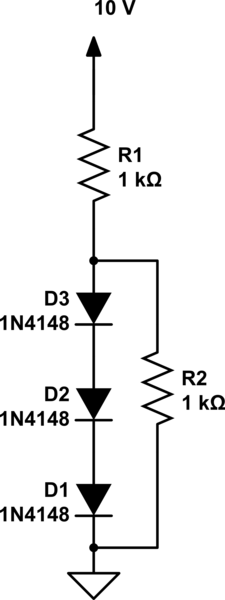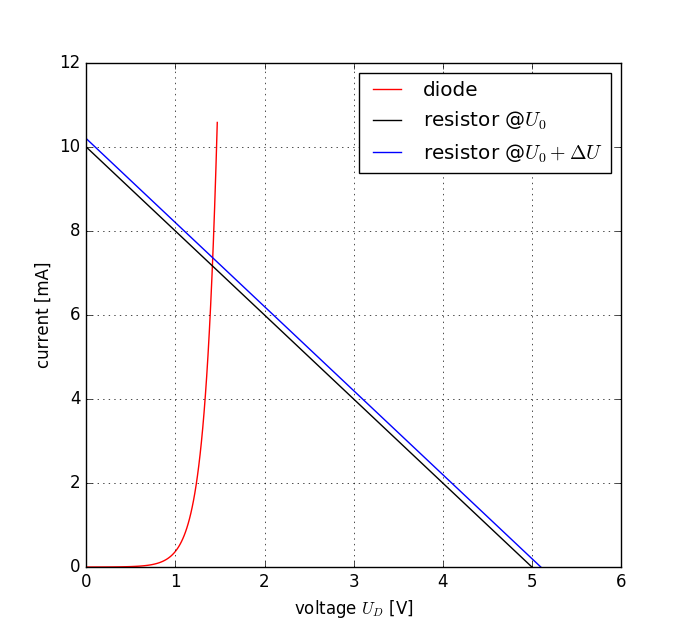
simulate this circuit – Schematic created using CircuitLab
Hi, Question: In the following, a string of three diodes is used to provide a constant voltage of about 2.1 V. We want to calculate the percentage change in this regulated voltage caused by (a) a ± 10% change in the power-supply voltage and (b) connection of a 1-kΩ load resistance. Assume n = 2.
I had some doubts regarding the small signal analysis to be carried out in part B. After asking here, I got enough help to understand and solve it. But the next passage in the book (Microelectronic Circuits) states that while using small signal analysis we get  .
.
But if we follow the detailed calculations using the exponential model we would get  .
.
I am not able to understand how to derive the answer using the exponential model. What are the steps to find the solution using the exponential model?
Link (to the previously asked question: Diode Modelling)


